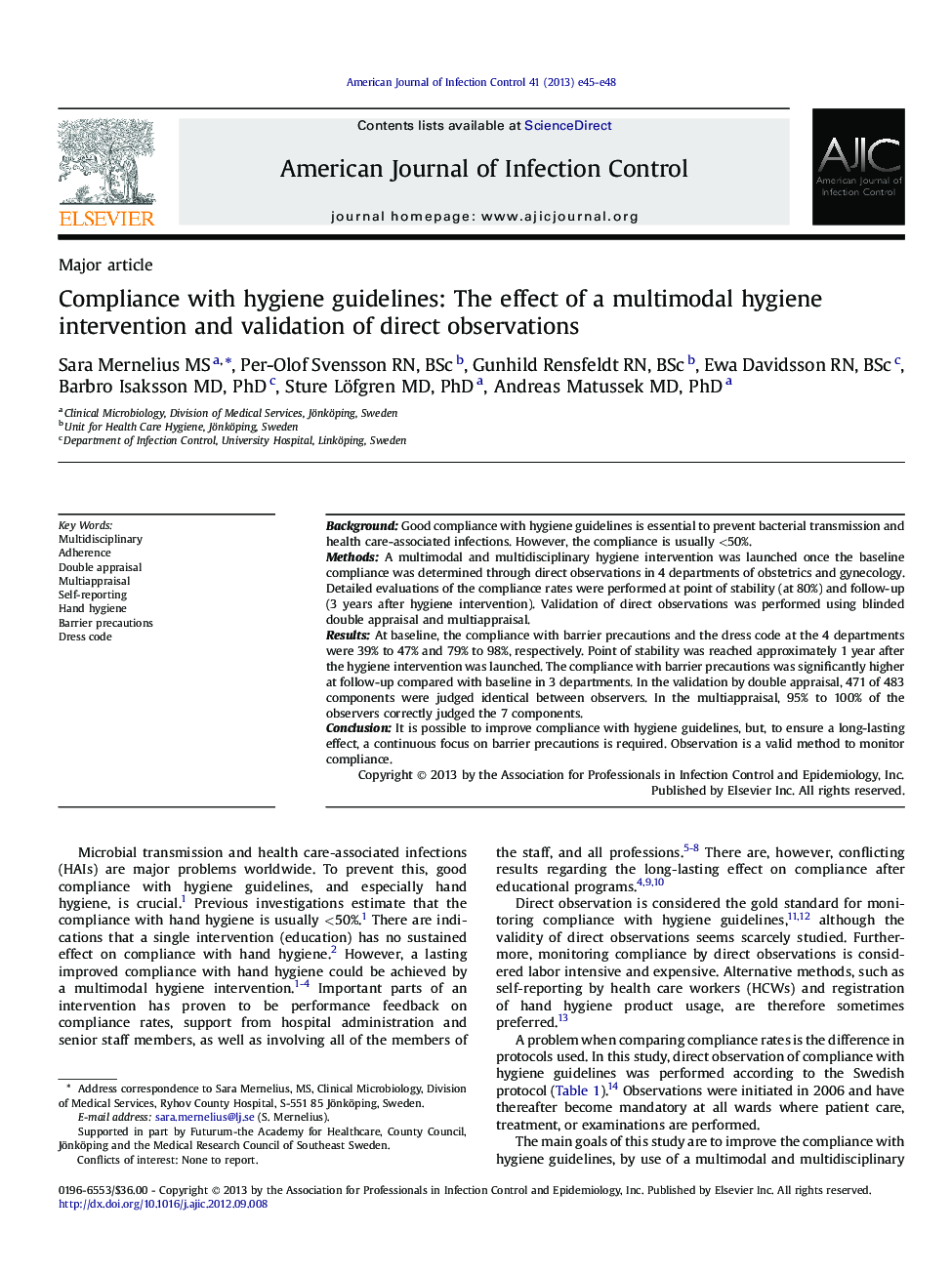| کد مقاله | کد نشریه | سال انتشار | مقاله انگلیسی | نسخه تمام متن |
|---|---|---|---|---|
| 2637346 | 1563500 | 2013 | 4 صفحه PDF | دانلود رایگان |

BackgroundGood compliance with hygiene guidelines is essential to prevent bacterial transmission and health care-associated infections. However, the compliance is usually <50%.MethodsA multimodal and multidisciplinary hygiene intervention was launched once the baseline compliance was determined through direct observations in 4 departments of obstetrics and gynecology. Detailed evaluations of the compliance rates were performed at point of stability (at 80%) and follow-up (3 years after hygiene intervention). Validation of direct observations was performed using blinded double appraisal and multiappraisal.ResultsAt baseline, the compliance with barrier precautions and the dress code at the 4 departments were 39% to 47% and 79% to 98%, respectively. Point of stability was reached approximately 1 year after the hygiene intervention was launched. The compliance with barrier precautions was significantly higher at follow-up compared with baseline in 3 departments. In the validation by double appraisal, 471 of 483 components were judged identical between observers. In the multiappraisal, 95% to 100% of the observers correctly judged the 7 components.ConclusionIt is possible to improve compliance with hygiene guidelines, but, to ensure a long-lasting effect, a continuous focus on barrier precautions is required. Observation is a valid method to monitor compliance.
Journal: American Journal of Infection Control - Volume 41, Issue 5, May 2013, Pages e45–e48